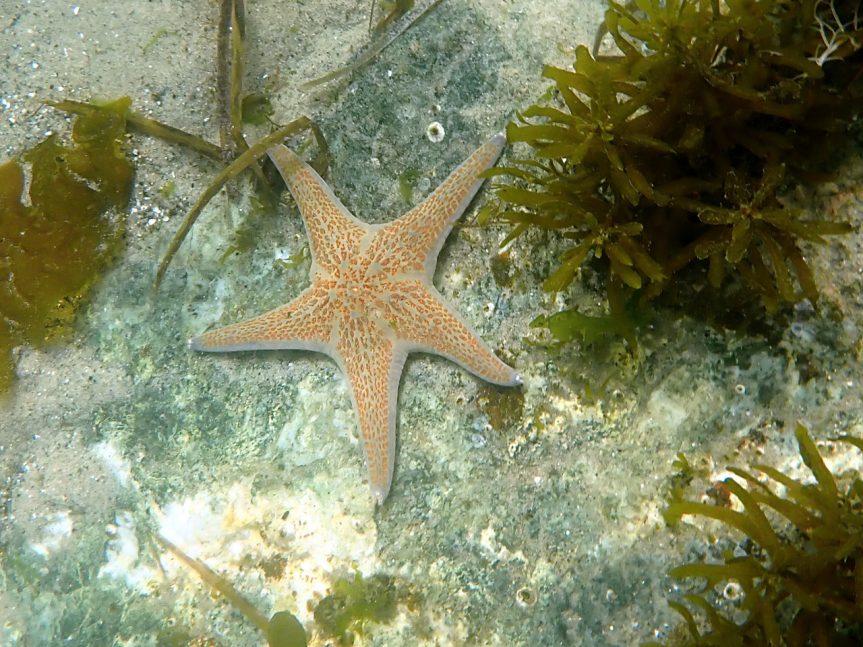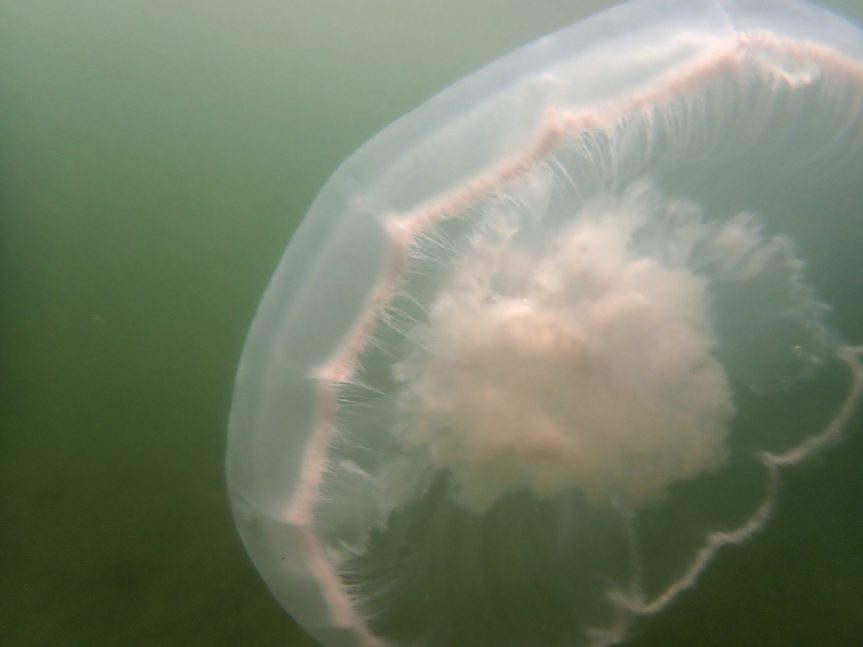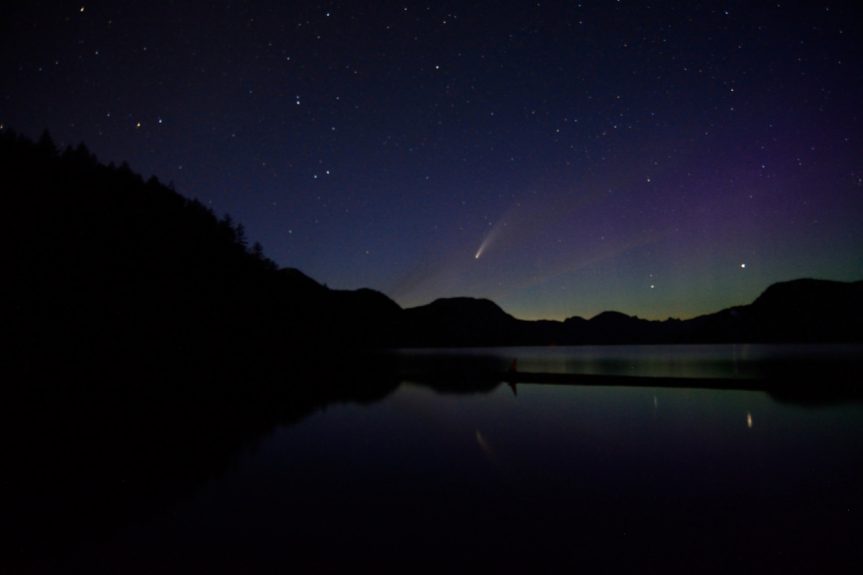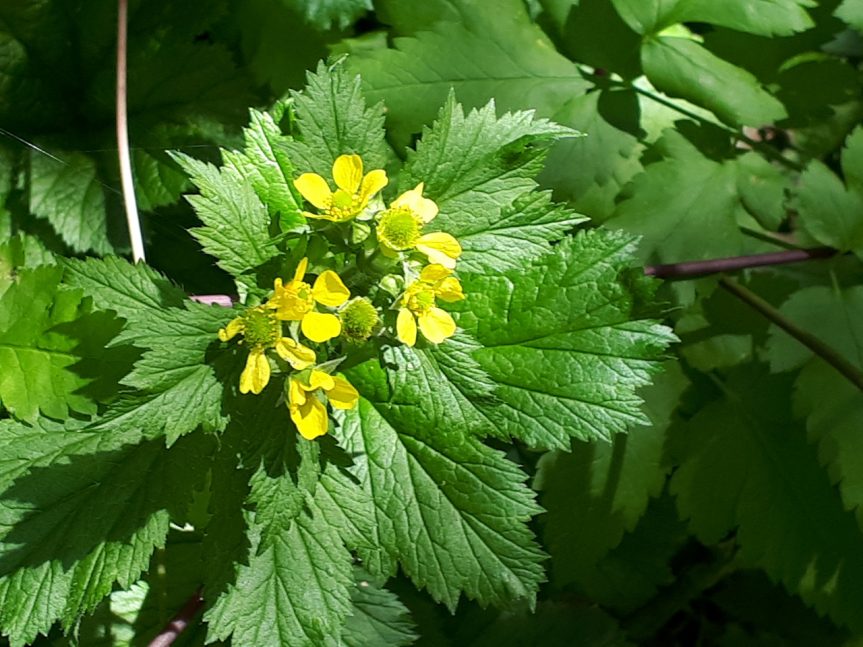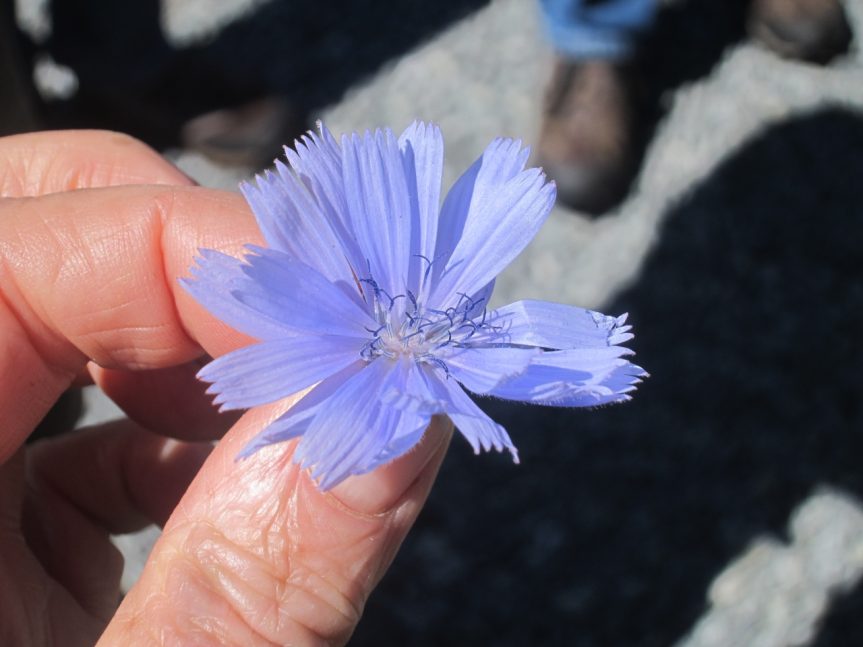
Cornflower – B. Sherriff

Buttercup – B. Sherriff

Bindweed – B. Sherriff

Curly Dock – B. Sherriff

Entrance to Willingdon Beach Trail – B. Sherriff

Ioni and Japanese Hogweed – B. Sherriff

Examining spores on Sword Fern– B. Sherriff

The plant group – B. Sherriff

Nightshade – B. Sherriff

Julie and Ioni – B. Sherriff

Ioni Wais – B. Sherriff

Ioni and Skunk Cabbage – B. Sherriff
Plant Walk with Ioni Wais
by Laurette Hamoline, 26 June 2016.
A small gaggle of enthusiastic naturalists (about 10-12 of us) gathered in Willingdon Park on Sunday to learn about plant classification. Ioni Wais was our charming and knowledgeable guide as we wandered around the grounds learning about strange “relations” in the plant kingdom. There are numerous ways in which we categorize plants but the main one both taxonomists and us regular folk use is a plant’s morphology, or how it looks. We observe the color and shape of the blossom and of the leaf and stem. Is it tall or short? Where is it growing and when? Does it have a taproot, a fibrous root or perhaps a rhizome? How does it disperse its seed – through the digestive system of animals, by wings like dandelion fluff or perhaps with hooks like a burr? These are all helpful in determining what family it may belong to but taxonomists go even deeper, studying the chemical compounds found in plants and even DNA to help them determine “family traits”.
The suffix “aceae” designates the family name. For example, po-“aceae” refers to the grass family, which is a huge family including our grains, corn, sugar cane and bamboo.
In the araceae family, also known as arums, there is usually a spadix (stem with flowers/seeds) surrounded by a spathe (leaf like structure) such as in the skunk cabbage. Some members of this family are thermogenic, creating their own heat, even melting through snow or ice. The flowers are often stinky in an effort to attract insects necessary for pollination. An interesting tidbit is that when bears break hibernation they seek out and consume skunk cabbage (with high concentrations of calcium oxalate) not as a food source but as a laxative to get their sluggish system functioning again. Plantain, commonly found in our lawns, belongs to this family and has been referred to as nature’s bandaid because of its many medicinal qualities.
We learned that the ranunculaceae family, which includes the common buttercup, likes moist conditions and the word ranunculus means “little frog”.
Within the polygonaceae or buckwheat family, many species exhibit a zigzag pattern on the stem with swollen nodes at each bend. The name is derived from Greek where “poly” means “many” and “goni” means “knee”. Japanese knot weed is a good example of this trait. There is also most often a sheath which covers the new growth. Think of your rhubarb when it first pops out of the ground.
Ioni made a valiant attempt to correct a few common misconceptions. There is no official or even universal classification for weeds or even invasive species. These are subject to the environment, political situation and even our own personal preferences.
Trees are not classified as coniferous opposed to deciduous. There are coniferous trees that lose their foliage in certain seasons and trees with leaves that are evergreen. Never mind what you were taught in school way back when!!
And it was very interesting to look at the inflorescence (proper name for the blossom) of different plants. Sunflowers and dandelions are composite flowers with a compact flower head consisting of hundreds of individual florets surrounded by many bracts or rays. And common yarrow or even cauliflower is a large cluster of florets.
So have a closer look at the plants around you. You might just learn something!

